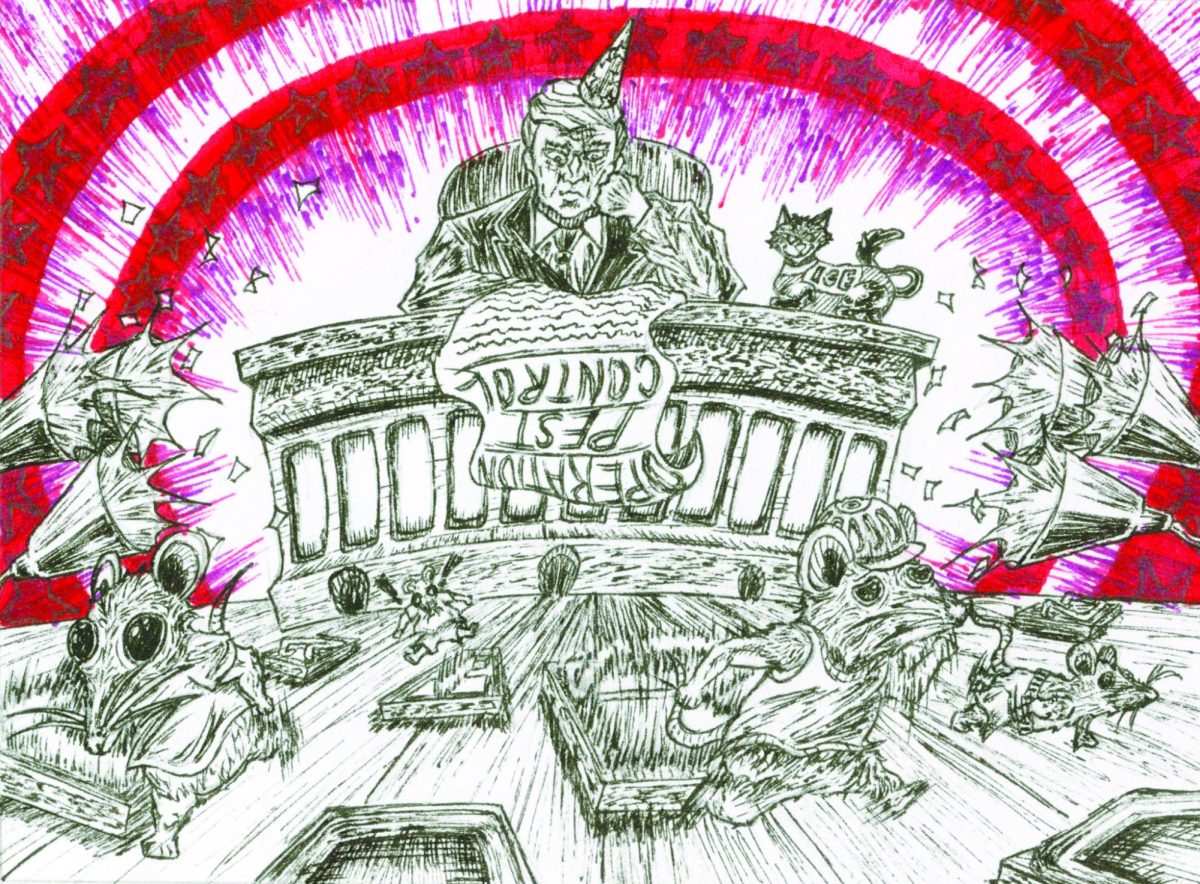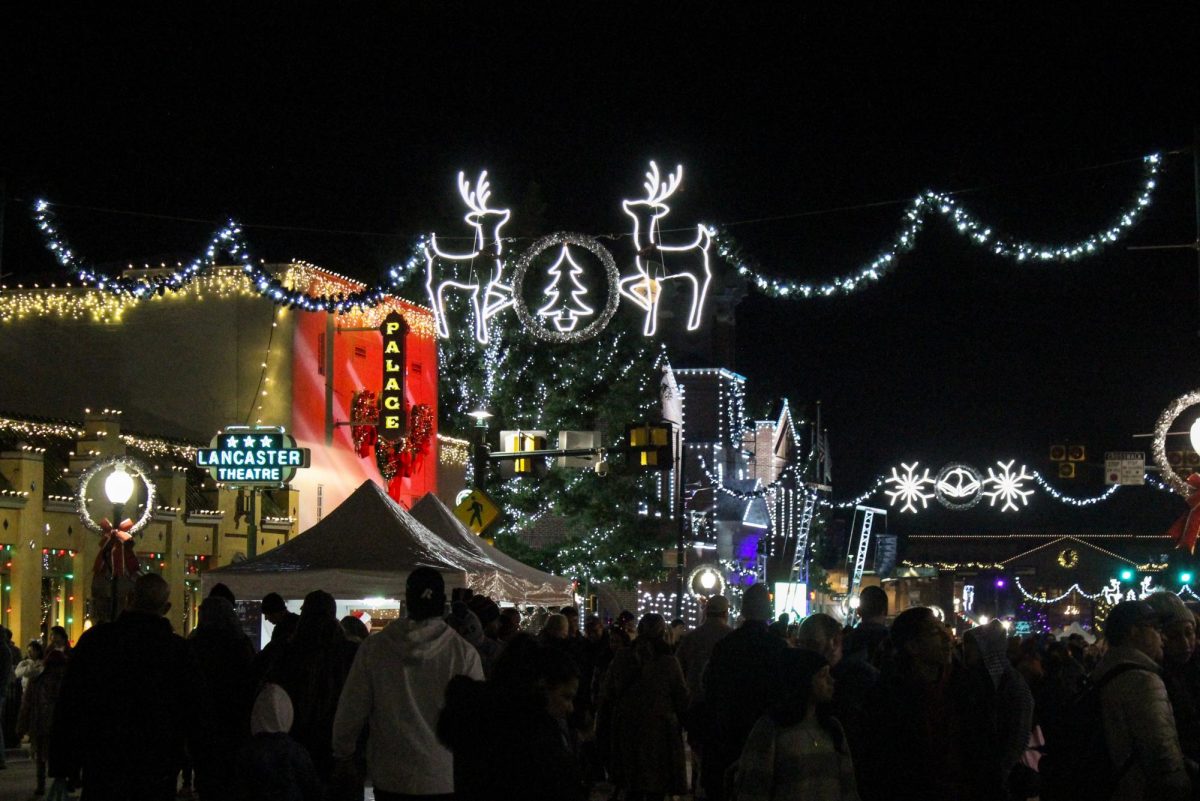As outrage over Confederate monuments spreads nationwide, protesters easily dislodge cheap statues.
By Monica Mitrovic
Copy Editor/Editorial Proofreader

The Robert E. Lee statue at Lee Park in Dallas is one of many controversial statues that people have called for the permanent removal of.
A group of protesters toppled a Confederate soldier statue on Aug. 14 in Durham, North Carolina. One protestor climbed atop the statue’s stone plinth, tied a yellow rope around the bronze soldier and, once on the ground, helped the crowd pull, slinging the monument to the ground, according to Quartz, a digital news outlet focused primarily on business.
Since the Aug. 12 event in Charlottesville, Virginia, many other cities across the country have moved to remove Confederate statues, according to Quartz.
The Southern Poverty Law Center tallied at least 1,500 Confederate symbols in public places, according to the SPLC website. “Texas has the second largest list of Confederate monuments,” Jennifer Allen, a Brookhaven College history professor, said. “Virginia is first, and then Texas comes in second, which kind of surprised me.”
According to Quartz, “The reasons there are so many of these statues, and why they’re so easily toppled, are one and the same: many of them were mass-produced in foundries and shoddily installed across the American South.” The Northern foundries worked with cast bronze or zinc to produce them faster and sell them cheaply.
Natalie Macellaio, who teaches sculpture at Brookhaven, said zinc is a soft metal. Brass and bronze are made up of copper, zinc and tin, depending on the alloy. Macellaio said the alloy becomes softer when zinc is added, and heat and weathering weaken the material.
Zinc is a cheap material easy to cast, but if they are going to be outside, the statues run the risk of eventually deteriorating, Macellaio said.
According to Quartz, the statues were not firmly attached to their pedestals because of their cheap quality. Macellaio said the anchoring process is ineffective if the bolted material is weak and compromised.
She said water settles down at the bottom where the statue and pedestal are connected, and acidic rainwater eats away at the material.
“Rainwater is not water you want to drink,” Macellaio said.
One of the leading manufacturers was the Monumental Bronze Company in Bridgeport, Connecticut, according to Quartz. The company specialized in white bronze, a cast zinc. The statues were marketed as more affordable than actual bronze, according to Hyperallergic, an online arts and culture newsletter.
According to Hyperallergic, Sarah Beetham, an art historian at the University of Delaware and an expert on soldier monuments, said most statues depicting a lone soldier in parade rest are not inscribed with the location they were made at because small Southern communities did not want to raise funds for monuments created by companies in the North.
Jim Dudlo, history department chair and professor, said the history of the monuments’ creation is more complicated than surface-level research. “The Confederate monuments, by and large, were not constructed in the immediate aftermath of the Civil War,” he said.
The saying that history is written by the victors has generally proven true, Dudlo said.
The winning side attempts to erase the losing side’s identity and does not let them celebrate it. “Yet, in this country, somehow, the Confederacy – which, by and large, could be viewed as traitors to the United States of America – the legacy has been allowed to exist,” he said. “And not just simply exist, but have public memorial spaces [dedicated] to those who fought against the United States of America.”
Dudlo said the Confederate monuments were built in the wake of Reconstruction generally from 1863-1877 when Southerners tried to redefine what the Civil War was, a notion known as the Lost Cause. He said the Republican Party at the time tried to reconstruct the South as they saw fit, and Southerners reacted negatively.
“There is no denying that slavery is front and center of everything involving the South’s decision to secede from the Union,” Dudlo said. Southerners were angered by the Reconstruction Amendments, which had officially abolished slavery, defined citizenship in the U.S. and given African-American males the right to vote.
He said Southerners wanted to find a way to support their ideals, such as white supremacy, and recast the Civil War as something other than slavery.
Dudlo said this is when the monuments’ construction began in commemoration of things other than slavery. Construction began again in the 1920s with the rise of the modern Ku Klux Klan and anti-immigrant sentiment, and once more during the Civil Rights era.
But this is a very select commemoration, Dudlo said. Arguably, he said, the second greatest general after Robert E. Lee was James Longstreet. “Yet, you will be hard-pressed to find any statues commemorating him [or] any schools named after him in the entire South because following the Civil War, James Longstreet supported the Republican Party coming into the South and reforming it,” Dudlo said.






